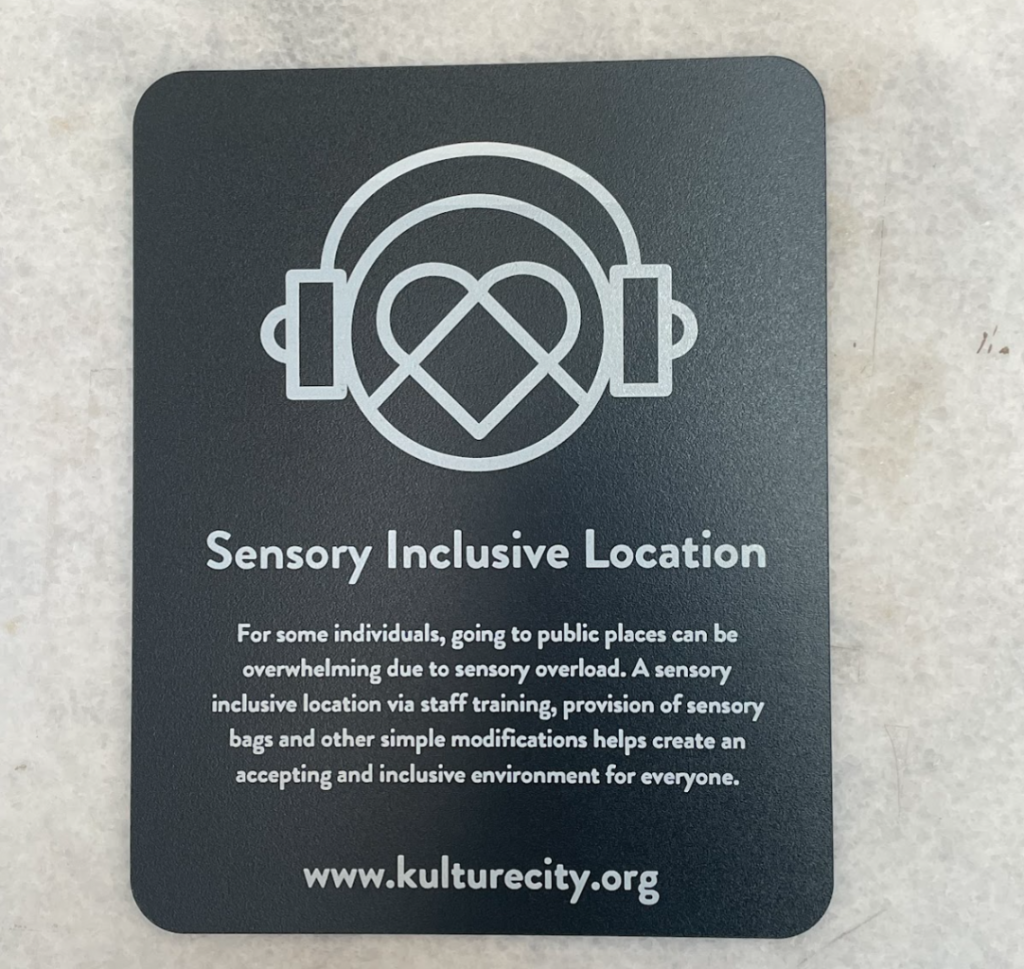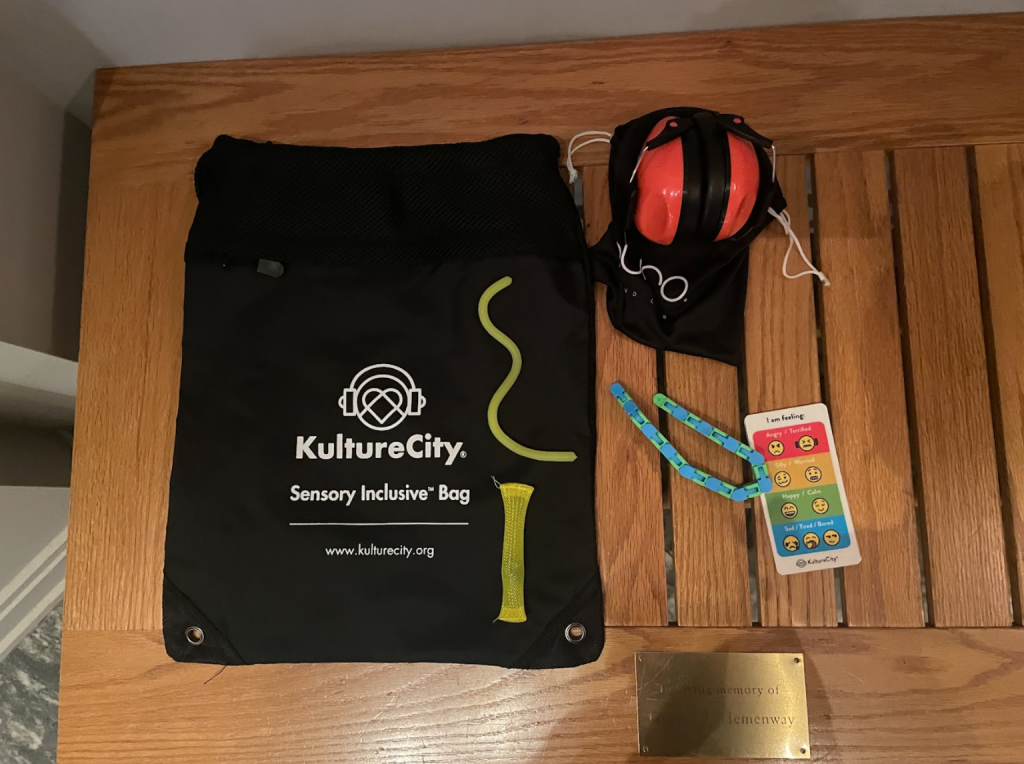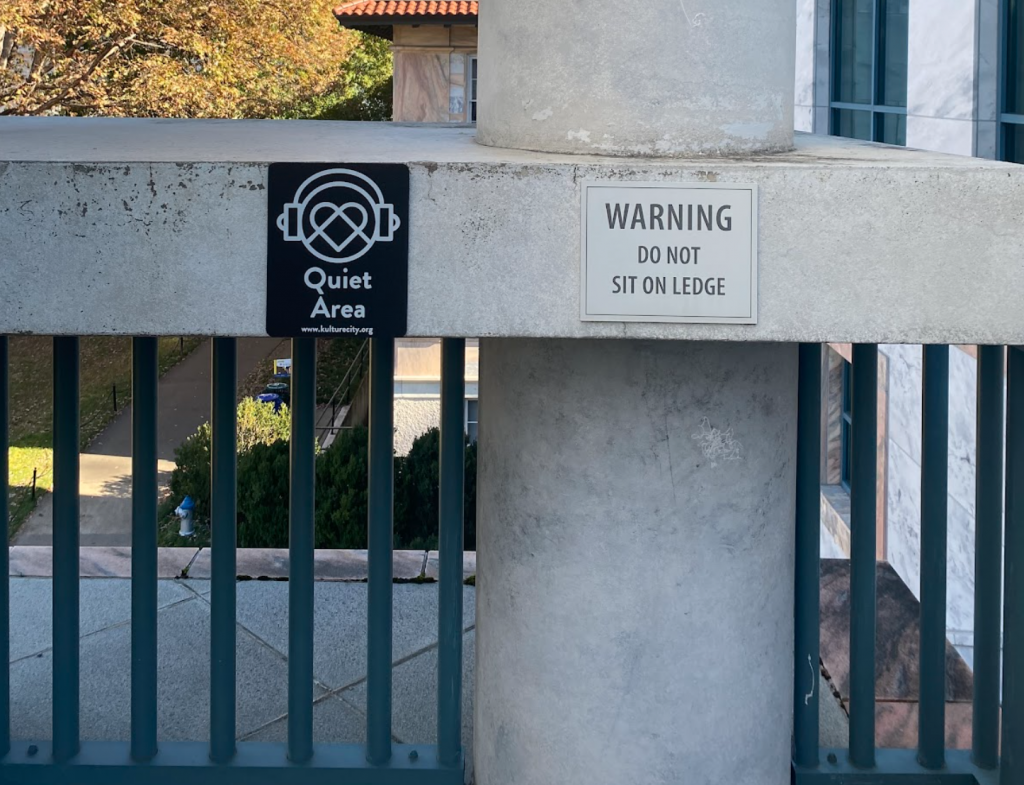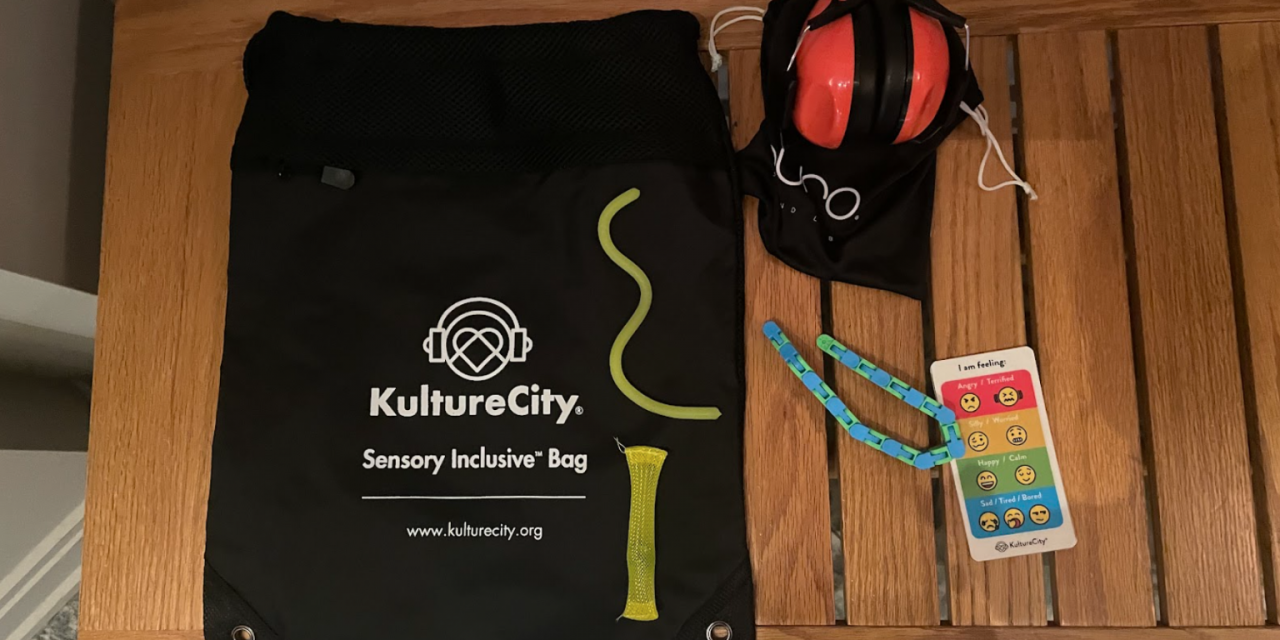KultureCity, a nonprofit spanning six countries and focusing on “creating sensory accessibility and inclusion for those with invisible disabilities,” recently partnered with Emory University’s Michael C. Carlos Museum to certify the museum as sensory inclusive. It is the first art museum in Georgia to receive this certification.
Carlos Museum Director of Education Katie Ericson said that as a public-facing organization, it is important for the museum to be inclusive.
“We have an internal diversity equity inclusion committee at the museum, and one thing we’ve been trying to really assess and address is accessibility to the museum,” Ericson said. “It all goes toward our goal of trying to make the Carlos the most welcoming place we can.”

A KultureCity plaque certifies the Carlos Museum as sensory inclusive. (Marian Moss/Contributing Writer)
Over 80% of the Carlos Museum staff were trained to recognize guests with sensory needs and handle sensory overload situations, Ericson said. This training is available to any employee throughout the year.
Although sensory sensitivities are typically associated with autism, they can also arise from other conditions such as post-traumatic stress disorder, anxiety and dementia. Ericson noted that KultureCity’s training prepared the staff for a wide range of sensory issues.
“With a lot of organizations that focus on sensory training, it focuses mostly on individuals with autism,” Ericson said. “With Kulture City, it highlighted sensory issues that all sorts of people can have. That let us serve more people in a way that if we focused exclusively on autism, we wouldn’t have been able to do.”
Emory Autism Advocacy Organization President Sabrina Schoenborn (24C) called KultureCity a “fantastic” organization.
“I was really relieved because when I first heard about it, my initial fear is always that there is a random organization that doesn’t put autistic joy first,” Schoenborn said. “I was really relieved that it was KultureCity.”
Under the new certification, the museum now offers sensory bags, which contain noise-canceling headphones, fidget tools, verbal cue cards and weighted lap pads.

The Carlos Museum now offers sensory bags, which contain noise-canceling headphones, fidget tools, verbal cue cards and weighted lap pads. (Marian Moss/Contributing Writer)
Additionally, museum guests can download the KultureCity app to view what sensory accommodations are available and where they can be accessed. The app also provides a feature called Social Story, which gives a preview of the museum so guests know what to expect.
The Carlos Museum displays plaques to mark headphone zones, indicating that an area might be loud or overstimulating to those with sensory accommodations, such as the museum entrance. A specially-designated quiet area is also located on the third-floor balcony, although it is accessible to all guests and is not monitored for noise.
Carlos Museum Education Program Specialist Ana Vizurraga noted that guests have experienced sensory overload at the museum before.
“The people they were with were not aware of the need to help them move away from the situation,” Vizurraga said. “It became extremely apparent how important to me [the training] was, because a lot of times, not that many people experience that. So that showed a definite need to just be aware of how simple it can be to help somebody.”
The museum’s certification can be an important first step in prioritizing the perspectives of individuals with sensory needs, Schoenborn said.
“The Carlos is doing such good work. I think . . . if we’re going to do these certifications and do that work, I would really encourage everybody to include autistic people in the conversation and celebration,” Schoenborn said. “This can definitely be a great first step into refocusing autistic people into a conversation about autism.”

A sign dedicates the third-floor balcony as a quiet area. (Marian Moss/Contributing Writer)
She added that the museum’s certification is an important step toward recognizing individuals with sensory accommodations, particularly for people with autism.
“One of the things that is super important with this is because museums and libraries and quiet places have always kind of been a refuge for people with autism,” Schoenborn said. “It gives the recognition that this has always kind of been a space where autistic people can go to and feel centered in. It means a lot to have that recognition.”





